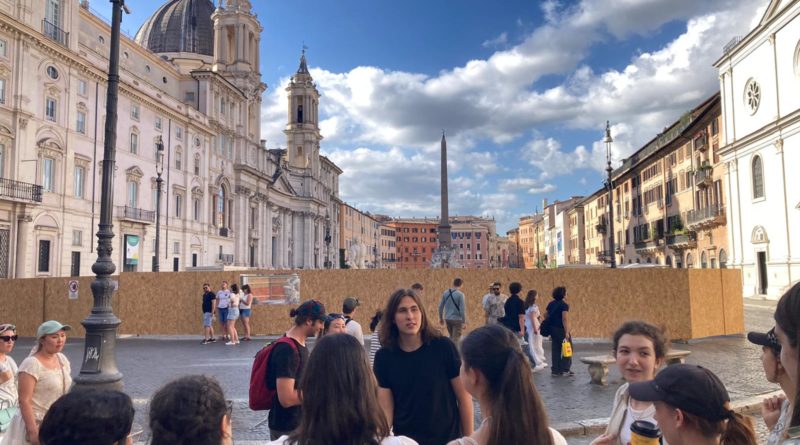Rome Trip: Piazza Navona
During our visit to Rome students became tour guides. Each student had to introduce a certain monument to others, focusing on these three areas:
– history of the monument
– how is that monument relevant for us today (Did it influence current culture, language, architecture?)
– a fun fact or an interesting story
In this blog post we share DAVID’s take on Piazza Navona:
History of Piazza Navona
Piazza Navona, one of Rome’s most iconic squares, traces its origins to the 1st century AD. Built on the site of the Stadium of Domitian, the square retained the stadium’s distinctive elongated shape. Emperor Domitian commissioned the stadium primarily for athletic contests, accommodating up to 20,000 spectators. Over time, the site transformed significantly, especially during the Baroque period, with notable contributions by artists like Bernini and Borromini. The 17th century saw the addition of the church Sant’Agnese in Agone and the grand Fontana dei Quattro Fiumi, symbolizing the Nile, Ganges, Danube, and Rio de la Plata rivers.
Modern Relevance
Piazza Navona remains a vibrant symbol of Rome’s architectural and cultural legacy. Its Baroque fountains and the surrounding historical buildings continue to inspire modern architecture and urban design worldwide. The square’s role as a bustling hub of social activity, filled with cafes, restaurants, and street performers, underscores its lasting impact on public space utilization. Furthermore, Piazza Navona influences contemporary culture through various artistic and literary references, maintaining its status as a cultural and historical touchstone.
Fun Fact
A fascinating and lesser-known fact about Piazza Navona is its summer transformation during the 17th century. Pope Innocent X initiated a unique tradition where the central area of the square was flooded to create a temporary lake, allowing for mock naval battles and cooling relief during the hot Roman summers. This inventive use of space not only entertained the populace but also showcased the innovative spirit of Roman engineering and design.
In conclusion, Piazza Navona is a testament to Rome’s enduring ability to blend history with contemporary life, offering a rich tapestry of cultural, architectural, and social significance that continues to enchant visitors from around the world.
Sources:
“Piazza Navona Rome – Square with Beautiful Fountains.” RomeSite, Bio Web Design, https://romesite.com/piazza-navona.html.
“Navona Square.” Turismo Roma, https://www.turismoroma.it/en/places/navona-square.
“Piazza Navona.” Lonely Planet, https://www.lonelyplanet.com/italy/rome/centro-storico/attractions/piazza-navona/a/poi-sig/389091/1321003.




